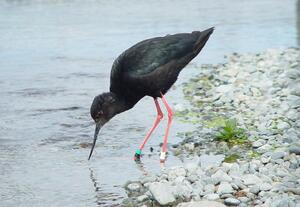
Photo credit: Dean Nelson, DOC
Pests and weeds in Canterbury
From the stark drylands of the Mackenzie Basin to the braided Rangitata and Rakaia rivers, Canterbury is home to many of New Zealand’s most photographed and celebrated landscapes. It is also home to many threatened native birds, insects and plants including the kāki, wrybill and kea.
Tackling the problem
Our work here is focussed on restoring biodiversity, improving land devastated by pests and weeds, and ensuring the free-flow of water through hydro lakes and rivers supporting our hydro-electric industry and supply.
We focus on areas with the highest scenic, cultural, recreational, and natural value which are threatened by the presence and potential spread of pests and weeds.
This includes gorse, broom and lupin control in rivers such as the Clarence, Waimakariri, Rakaia, Ashburton and Rangitata, lakeweed control in the Waitaki Lakes and pest and weed control on land and in riverbeds in the Mackenzie Basin.
The range and spread of pests and weeds in Canterbury from the high country pastoral lands to the mouths of braided rivers demands that we deploy a wide array of weed and pest management techniques.
From scuba divers hand weeding lagarosiphon in Lake Benmore to removing gorse along braided rivers we work hard to find the most efficient ways to control pests and weeds so Canterbury’s precious biodiversity is protected for future generations.
Working with others
Pests and weeds don’t recognise boundaries, so we work with a wide range of partners to make sure our control efforts are as effective as possible. We provide advice to the national cross-agency wilding pine and wallaby control programmes, which heavily invest in Canterbury.
We work with pastoral leaseholders, Environment Canterbury, district councils, iwi, the energy industry and community groups throughout Canterbury to ensure we are fulfilling our roles as stewards of the significant lands and waterways we manage throughout the region.
How you can help
All lake and river users also have a role to play in stopping the spread of water weeds. If you’re moving between waterways, you must clean all your gear using the 'Check, Clean, Dry' method. This stops plant fragments moving between waterways, which can be all it takes for a new infestation to begin.